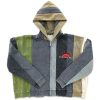Are you tired of falling for fitness myths that leave you feeling discouraged and defeated? It’s time to separate fact from fiction and bust some common misconceptions once and for all. From the belief that lifting weights will make women bulky to the idea that cardio is the only way to burn fat, we’re here
Are you tired of falling for fitness myths that leave you feeling discouraged and defeated? It’s time to separate fact from fiction and bust some common misconceptions once and for all. From the belief that lifting weights will make women bulky to the idea that cardio is the only way to burn fat, we’re here to set the record straight on 10 of the most prevalent fitness falsehoods. So get ready to learn the truth behind these myths, and discover how it can help you achieve your healthiest self yet!
Myth #1: You Shouldn’t Exercise If You’re Sick
When you’re under the weather, it’s common to assume that rest is the best medicine. But according to many experts, light exercise may actually help you feel better faster. “There is a body of evidence that supports the notion that moderate-intensity exercise can be beneficial for people when they are sick,” says David Nieman, DrPH, director of the Human Performance Laboratory at Appalachian State University in Boone, North Carolina.
Of course, if you have a fever or your symptoms are above the neck (such as a runny nose or sinus congestion), it’s best to skip your workout and focus on getting well. However, if you’re dealing with a minor illness below the neck (such as a cold or upset stomach), some research suggests that light to moderate activity may actually help speed up your recovery.
One study found that cyclists who pedaled at a low intensity for 40 minutes three times per week had fewer upper respiratory infections than those who didn’t exercise at all. Other research has shown that walking can also help clear nasal passages and make cold symptoms less severe.
So if you’re feeling under the weather but not too awful, some light exercise may be just what the doctor ordered. Just be sure to listen to your body and don’t push yourself too hard.
Myth #2: Lifting Weights Makes Women Bulky
Lifting weights will not make women bulky. In fact, lifting weights can help women to slim down and tone their bodies. When women lift weights, they are actually building lean muscle mass. Lean muscle mass burns more calories than fat, even at rest. This means that by lifting weights, women are helping to boost their metabolism and burn more fat.
In addition, lifting weights can help to build strong bones and reduce the risk of osteoporosis. Strong bones are important for maintaining a healthy body and avoiding injury.
So, don’t be afraid to lift weights! It can actually help you to achieve your fitness goals.
Myth #3: Cardio is the Best Way to Lose Weight
You’ve probably heard it a million times before – in order to lose weight, you need to do lots of cardio. And while it’s true that cardio can help you burn calories and shed pounds, it’s not the be-all, end-all of weight loss. In fact, there are plenty of other exercises that can help you lose weight just as effectively (if not more so) than cardio.
So what’s the problem with cardio? For one, it’s often repetitive and boring. If you’re doing the same type of cardio workout day after day, it’s only a matter of time before you start to dread your workouts and lose motivation.
But more importantly, relying too heavily on cardio can actually sabotage your weight loss efforts in the long run. That’s because when you do too much cardio, your body starts to adapt and becomes more efficient at burning calories. This means that over time, you’ll have to do more and more cardio just to see the same results.
If you really want to lose weight and keep it off, focus on strength training and interval training – two types of exercise that are far more effective (and less boring) than traditional cardiovascular exercise.
Myth #4: You Need to Spend Hours in the Gym to See Results
The fourth fitness myth that we will bust today is the belief that you need to spend hours in the gym to see results. This simply is not true! You can see significant results by working out for as little as 30 minutes a day, 4-5 times per week.
Of course, the more time you can dedicate to your workout routine, the better. But if you’re short on time, don’t let that be an excuse to skip your workout altogether. Just remember that even a little bit of exercise is better than none at all.
Myth #5: Crunches are the Best Way to Get a Six-Pack
Crunches are often thought of as the best way to achieve a six-pack, but this simply isn’t true. While crunches can help build the muscles in your core, they won’t do much to reduce the fat that is covering them.
If you want to see your six-pack, you need to focus on losing overall body fat. This can be done through a combination of diet and exercise. cardio exercises like running and biking are great for burning calories and helping you lose weight all over, while strength training can help you build muscle and tone your body.
When it comes to diet, eating healthy foods and avoiding processed sugars will help you lose weight and keep it off. So, ditch the crunches and focus on a comprehensive fitness plan that will give you the results you’re looking for.
Myth #6: You Shouldn’t Eat Before Working Out
It is a common belief that one should not eat before working out. However, this is not necessarily true. Depending on when and what you eat, it can actually be beneficial to have a small meal or snack before hitting the gym.
If you are working out first thing in the morning, it is important to eat something beforehand. Skipping breakfast can lead to low energy levels and make it difficult to get through your workout. A simple bowl of oatmeal or piece of fruit can give you the fuel you need to power through your routine.
If you are working out later in the day, you may not need to eat a full meal before exercise. However, it is still a good idea to have a small snack such as an energy bar or yogurt to tide you over until post-workout eats. Eating too close to your workout can lead to indigestion, so give yourself at least an hour after eating before exercising.
Bottom line: Listen to your body and eat accordingly. A little food before exercise can actually be helpful in boosting energy levels and helping you stick with your workout plan.





















Leave a Comment
Your email address will not be published. Required fields are marked with *